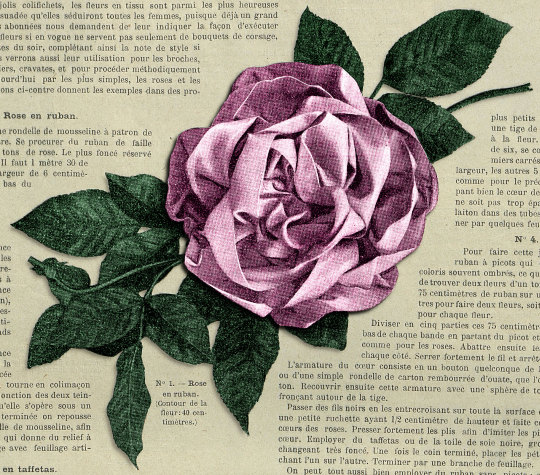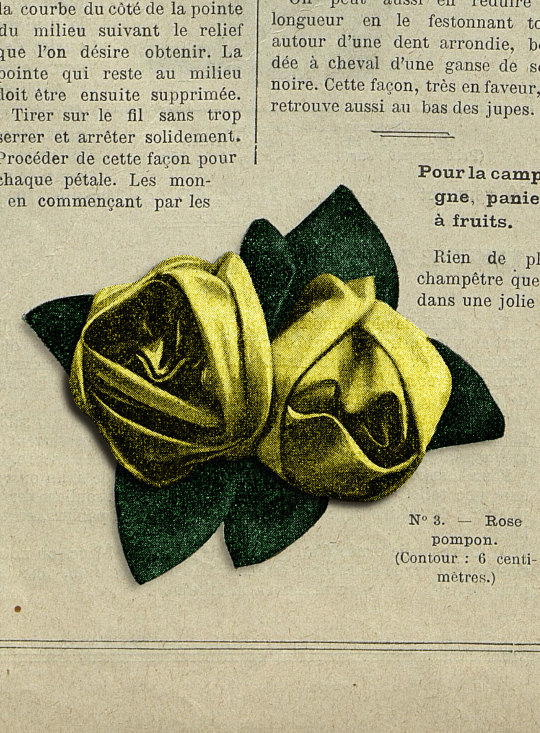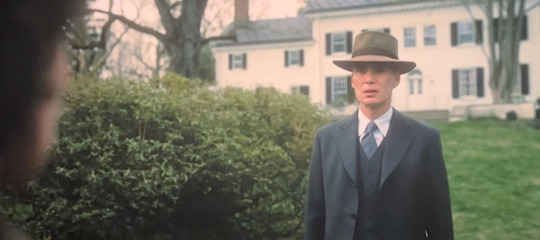#july 21
Text


𝙹𝚞𝚕𝚢 𝟸𝟷, 𝟷𝟿𝟷𝟹
𝚃𝚑𝚎 𝙳𝚒𝚊𝚛𝚒𝚎𝚜 𝙾𝚏 𝙵𝚛𝚊𝚗𝚣 𝙺𝚊𝚏𝚔𝚊, 𝟷𝟿𝟷𝟶 -𝟷𝟿𝟷𝟹
[ID: July 21. Miserable creature that I am. END ID]
#as the years pass I find it more difficult to understand why he was constantly so tremendously hard on himself#it's heartbreaking#clarity strikes nevertheless#kafka#franz kafka#literature#quotes#daily kafka#july 21#july#the diaries of franz kafka#academia#dark academia#quote#woods#dailykafka#words#lit#books#books and libraries#night#reading#quote of the day#bookworm#book quotes#prose#booklr#bibliophile#excerpt
7K notes
·
View notes
Text

Weezmin jumpscare
3K notes
·
View notes
Text
Next time someone has a baby gender reveal party, instead of "Girl" or "Boy" it should be "Barbie" or "Oppenheimer".
901 notes
·
View notes
Text
Wesper date idea except it’s just Wylan wanting to see Oppenheimer and Jesper wanting to see Barbie so they go see both
#and it started off with jesper asking Wylan to see a movie July 21 and Wylan getting so excited to see Oppenheimer#only for jesper to actually be talking about Barbie#we love our bomb lover and fashion enthusiast#literal power couple#incorrect quotes#text post#six of crows#soc#incorrect six of crows#jesper fahey#wylan van eck#wesper my otp#wesper#wesper my beloved#oppenheimer#barbie#july 21
525 notes
·
View notes
Text

« Happy birthday »
#im not crying you are#tristamp#vash fanart#vash the stampede#trigun#trigun fluff#trigun wolfwood#trigun vash#trigun fanart#nicholas d. wolfwood#july 21#whyyyy#killing the mood#emo scene#why life why death#vash our beloved#trigun stampede#trigun art
288 notes
·
View notes
Text

— July 21, 1913 / Franz Kafka diaries
#July 21#1913#july#franz kafka#the diaries of franz kafka#franz kafka diaries#quotes#writing#dark academia#id#text id
1K notes
·
View notes
Text
Happy 3rd Birthday to
“The Human Mop”
128 notes
·
View notes
Text




La Mode illustrée, no. 29, 21 juillet 1912, Paris. Les nouvelles fleurs en tissu. Louise Villas. No. 1. — Rose en ruban. (Contour de la fleur: 40 centimètres.) No. 2. — Rose en taffetas. (Contour: 13 centimètres.) No. 3. — Rose pompon. (Contour: 6 centimètres.) No. 4. — Pavot. (Contour: 27 centimètres.) Ville de Paris / Bibliothèque Forney
No. 1. — Rose en ruban.
Exécution. — Tailler une rondelle de mousseline à patron de 6 centimètres de diamètre. Se procurer du ruban de faille très souple de deux jolis tons de rose. Le plus foncé réservé pour le cœur de la fleur. Il faut 1 mètre 30 de chaque teinte sur une largeur de 6 centimètres. Froncer ensuite le bas du ruban en réduisant la longueur à 40 centimètres au plus.
Pour simuler les pétaies il suffit de "pincer" le ruban de distance en distance en fixant les plis par un point. Les premiers pétales sont formés à 10 centimètres de distance (prise à la lisière du ruban), puis on augmente progressivement jusqu'à 18 centimètres pour les plus grands pétales.
Ceci fait, on commence par coudre au centre de la rondelle l'extrémité froncée du ruban foncé, puis l'on tourne en colimaçon en cousant le ruban. La jonction des deux teintes est invisible, puisqu'elle s'opère sous un pétale. Une fois la fleur terminée on repousse intérieurement la rondelle de mousseline, afin de produire une cavité qui donne du relief à la fleur. Ajouter une tige avec feuillage artificiel.
—
Cut a round of patterned muslin 6 centimeters in diameter. Get some very flexible faille ribbon in two pretty shades of pink. The darkest reserved for the heart of the flower. It takes 1.3 meters of each shade over a width of 6 centimeters. Then gather the bottom of the ribbon, reducing the length to 40 centimeters at most.
To simulate the petals it is enough to "pinch" the ribbon from distance to distance by fixing the folds with a point. The first petals are formed 10 centimeters apart (taken from the edge of the ribbon), then gradually increase to 18 centimeters for the largest petals.
This done, we start by sewing the gathered end of the dark ribbon in the center of the washer, then we turn in a spiral by sewing the ribbon. The junction of the two shades is invisible, since it takes place under a petal. Once the flower is finished, the muslin disc is pushed back inside, in order to produce a cavity which gives relief to the flower. Add a stem with artificial foliage.
No. 2. — Rose en taffetas.
Ce genre de fleur est destiné aux garnitures de robes, employées en bouquets pour retenir les plis d'une draperie, ou rangées sur le devant des corsages en guise de boucle de ceinture.
Chaque rose se compose d'un cœur et de cinq pétales. Le cœur se fait avec un biais de tissu replié. Il a une longueur de 12 centimètres sur une largeur de 5, centimètres, ce qui donne 2 centimètres 1/2 une fois replié.
Commencer à fixer le fil à l'extrémité d'un des bords supérieurs mis en double, descendre en biais en comptant les points jusqu'au bord inférieur, remonter en formant le même nombre de points et continuer ces zigzags sur toute la longueur du biais. Tirer fortement le fil. Rouler cette petite ruche qui formera des pointes chiffonnées, la lier par le pied, et couper le surplus du tissu. Ses pétales sont des carrés de toile de soie ayant 10 centimètres de largeur pour les deux premiers, 12 centimètres pour les trois autres, cinq pétales étant nécessaires pour faire ces roses. Après les avoir taillés, on les ploie en "mouchoir" et l'on passe un fil allant d'un angle à un autre, en prononçant plus ou moins la courbe du côté de la pointe du milieu suivant le relief que l'on désire obtenir. La pointe qui reste au milieu doit être ensuite supprimée.
Tirer sur le fil sans trop serrer et arrêter solidement. Procéder de cette façon pour chaque pétale. Les monter ensuite autour du cœur en commençant par les plus petits.
Les feuilles s'obtiennent aussi avec avec un carré de tissu. On les reploie également en mouchoir. Mais ici on coupe l'étoffe de façon à former deux triangles, ce qui fait deux feuilles par carré.
Reployer ensuite le triangle. Faire une couture partant du sommet jusqu'au bas. Retourner ce cornet. Le côté pointu simule le haut de la feuille. Le bas froncé très serré forme des plis imitant les nervures. Chaque feuille se fixe ensuite sous la rose qui doit rester assez plate.
—
Each rose consists of a heart and five petals. The heart is made with a folded fabric bias. It is 12 centimeters long by 5 centimeters wide, which gives 2.5 centimeters when folded.
Begin to fasten the thread at the end of one of the upper edges doubled, go down on the bias by counting the stitches to the lower edge, go up by forming the same number of stitches and continue these zigzags over the entire length of the bias. Pull the thread strongly. Roll up this little ruffle which will form crumpled points, tie it by the foot, and cut off the excess fabric. Its petals are squares of silk canvas, 10 centimeters wide for the first two, 12 centimeters for the other three, five petals being necessary to make these roses. After having cut them, we fold them in a "handkerchief" and we pass a wire going from one angle to another, by pronouncing more or less the curve on the side of the point of the medium according to the relief which we desire. The tip that remains in the middle must then be removed.
Pull the thread without tightening too much and stop firmly. Proceed in this way for each petal. Then mount them around the heart, starting with the smallest ones.
The leaves are also obtained with a square of fabric. They are also folded into a handkerchief. But here we cut the fabric so as to form two triangles, which makes two sheets per square.
Then fold the triangle back. Sew a seam from top to bottom. Return this cone. The pointed side simulates the top of the leaf. The very tight gathered bottom forms pleats imitating the ribs. Each leaf then attaches under the rose which must remain fairly flat.
No. 3. — Roses pompon.
Destinées soit à un chapeau, soit comme bouquet de corsage.
Ces roses se font en toile de soie de deux tons avec feuillage artificiel. On procède pour les faire comme pour les précédentes, avec cette différence que les dimensions en sont très réduites. Le cœur est taillé sur une longueur de 12 centimètres sur 3 centimètres de largeur. Les zigzags sont beaucoup plus petits et on adapte ce cœur à une tige de laiton qui sert de monture à la fleur. Les pétales, au nombre de six, se cousent un à un. Les premiers carrés ont 4 centimètres 1/2 de largeur, les autres 5 centimètres 1/2. Procéder comme pour le précédent modèle, en enveloppant bien le cœur de façon à ce que la fleur ne soit pas trop épanouie. Enfiler les fils de laiton dans des tubes de caoutchouc et terminer par quelques feuillages.
—
Intended either for a hat or as a corsage.
These roses are made of two-tone silk canvas with artificial foliage. We proceed to make them as for the previous ones, with this difference that the dimensions are very small. The heart is cut over a length of 12 centimeters by 3 centimeters wide. The zigzags are much smaller and this heart is adapted to a brass rod which serves as a mount for the flower. The petals, six in number, are sewn together one by one. The first squares are 4.5 centimeters wide, the others 5.5 centimeters. Proceed as for the previous model, wrapping the heart well so that the flower does not bloom too much. Thread the brass wires into rubber tubes and finish with some foliage.
No. 4. — Pavot.
Pour faire cette jolie fleur on emploie du ruban à picots qui existe en de charmants coloris souvent ombrés, ce qui permet dans la largeur de trouver deux fleurs d'un ton différent. Il faut environ 75 centimètres de ruban sur une largeur de 12 centimètres pour faire deux fleurs, soit 6 centimètres de largeur pour chaque fleur.
Diviser en cinq parties ces 75 centimètres. Les séparer. Froncer le bas de chaque bande en partant du picot et en décrivant une courbe comme pour les roses. Abattre ensuite les pointes qui restent de chaque côté. Serrer fortement le fil et arrèter.
L'armature du cœur consiste en un bouton quelconque de 1 centimètre de diamètre ou d'une simple rondelle de carton rembourrée d'ouate, que l'on adapte à un fil de laiton. Recouvrir ensuite cette armature avec une sphère de toile de soie vert pâle en la fronçant autour de la tige.
Passer des fils noirs en les entrecroisant sur toute la surface du cœur. Adapter autour une petite ruchette ayant 1/2 centimètre de hauteur et faite comme il à été dit pour les cœurs des roses. Presser fortement les plis afin d'imiter les pistils et coudre autour du cœur. Employer du taffetas ou de la toile de soie noire, gros bleu, violet ou un ton changeant très foncé. Une fois le coin terminé, placer les pétales autour en les chevauchant l'un sur l'autre. Terminer par une branche de feuillage.
On peut tout aussi bien employer du ruban sans picots; et ces fluers, exécutées en rouge, imitent à s'y méprendre les coquelicots des champs.
—
To make this pretty flower we use spiked ribbon which exists in charming colors often shaded, which allows in the width to find two flowers of a different tone. It takes about 75 centimeters of ribbon over a width of 12 centimeters to make two flowers, or 6 centimeters in width for each flower.
Divide these 75 centimeters into five parts. Separate them. Gather the bottom of each strip starting from the picot and describing a curve as for the roses. Then cut down the remaining tips on each side. Tighten the thread strongly and stop.
The frame of the heart consists of any button 1 centimeter in diameter or a simple round piece of cardboard stuffed with wadding, which is fitted to a brass wire. Then cover this frame with a sphere of pale green silk fabric by gathering it around the stem.
Pass black threads criss-crossing them over the entire surface of the heart. Adapt around a small hive 1/2 centimeter high and made as it was said for the hearts of the roses. Firmly press the folds to imitate the pistils and sew around the heart. Use taffeta or silk black, deep blue, purple or a very dark changing tone. Once the corner is finished, place the petals around it, overlapping them one on top of the other. Finish with a branch of foliage.
You can just as well use ribbon without pins; and these flowers, executed in red, imitate field poppies unmistakably.
Louise Villas
#La Mode illustrée#20th century#1910s#1912#on this day#July 21#periodical#fashion#photo#craft#decoration#flowers#Forney#Louise Villas#dress
103 notes
·
View notes
Text
Animal of the Day!
Rio Mayo Titi Monkey (Plecturocebus oenanthe)

(Photo by JungleDragon)
Conservation Status- Critically Endangered
Habitat- Northeastern Peru
Size (Weight/Length)- 1 kg; 33 cm
Diet- Fruits; Leaves; Seeds; Insects
Cool Facts- Considered one of the world’s rarest monkeys, the Rio Mayo titi monkey continues to disappear due to habitat loss, disease, and the illegal pet trade. These tiny monkeys live in small groups as they travel their forest home. As the majority of their home has been transformed into farmland, the monkeys are capable of living in high density areas with several groups inhabiting a single territory. While hunting for insects, the titi monkey is extremely stealthy and has a surprisingly high success rate. Conservation efforts are rushing to save the Rio Mayo titi monkey through protecting their remaining range from agricultural use. Further research is currently being conducted for attempts at captive breeding in zoos and sanctuaries.
Rating- 12/10 (Hee hee, titi.)
#animal of the day#animals#mammals#monkeys#friday#july 21#rio mayo titi monkey#titi monkey#biology#science#conservation#the more you know
90 notes
·
View notes
Photo

Bishop John Andrew Gregg of the African Methodist Episcopal Church visits the 630th Ordnance Company in Australia on July 21, 1943.
Record Group 111: Records of the Office of the Chief Signal Officer
Series: Photographs of American Military Activities
Image description: Bishop Gregg encourages a koala to climb to his arm from the arm of the soldier who is holding the koala. Other soldiers stand to the side and back and watch. This Army unit was a segregated unit; all of the men in the image are Black.
#archivesgov#July 21#1943#1940s#military#U.S. Army#religion#African Methodist Episcopal Church#AME Church#koala#Australia
69 notes
·
View notes
Text


𝙹𝚞𝚕𝚢 𝟸𝟷, 𝟷𝟿𝟷𝟹
𝚃𝚑𝚎 𝙳𝚒𝚊𝚛𝚒𝚎𝚜 𝙾𝚏 𝙵𝚛𝚊𝚗𝚣 𝙺𝚊𝚏𝚔𝚊, 𝟷𝟿𝟷𝟶 -𝟷𝟿𝟷𝟹
[ID: July 21. Nothing, nothing, nothing. END ID]
#kafka#july 21#franz kafka#quotes#literature#daily kafka#july#the diaries of franz kafka#academia#dark academia#quote#woods#dailykafka#words#lit#books#books and libraries#night#reading#quote of the day#bookworm#book quotes#prose#booklr#bibliophile#excerpt#nothing
519 notes
·
View notes
Text










Oppenheimer (2023)
#2023 films#cinema#cinema aesthetic#barbienheimer#oppenheimer#robert oppenheimer#cillian murphy#emily blunt#robert downey jr#florence pugh#christopher nolan#films#movies#july 21#filmedit#historical events#historical#history#ww2
131 notes
·
View notes
Text

Robin Williams
July 21, 1951 – August 11, 2014
84 notes
·
View notes
Photo

461 notes
·
View notes
Text

Happy Barbie release day everyone!! Heres the Birkins going to enjoy it and y'all should too
#william birkin#sherry birkin#annette birkin#resident evil 2 remake#resident evil art#resident evil#ibispaintx#fanart#my art#annette is a lil further back cus will amd sherry were too excited and hopped out immediately#leaving her by herself to go park lol#she doesn't mind since they're all out together as a family >_<#barbie#july 21#stabby does talking
51 notes
·
View notes
Text

Some digital drawings of the three main characters from the movie They Cloned Tyrone.
Go watch it, it’s good and Netflix is trying to bury it and it has the misfortune of coming out on the same day as Barbenheimer. If you like Sorry to Bother You but thought it was a little too weird and don’t like relationship drama/love stories, then you’ll love this movie.
#they cloned tyrone#fanart#john boyega#jamie foxx#teyonah parris#barbenheimer#july 21#digital art#the cinematography in this movie was great the lighting *chef's kiss
51 notes
·
View notes